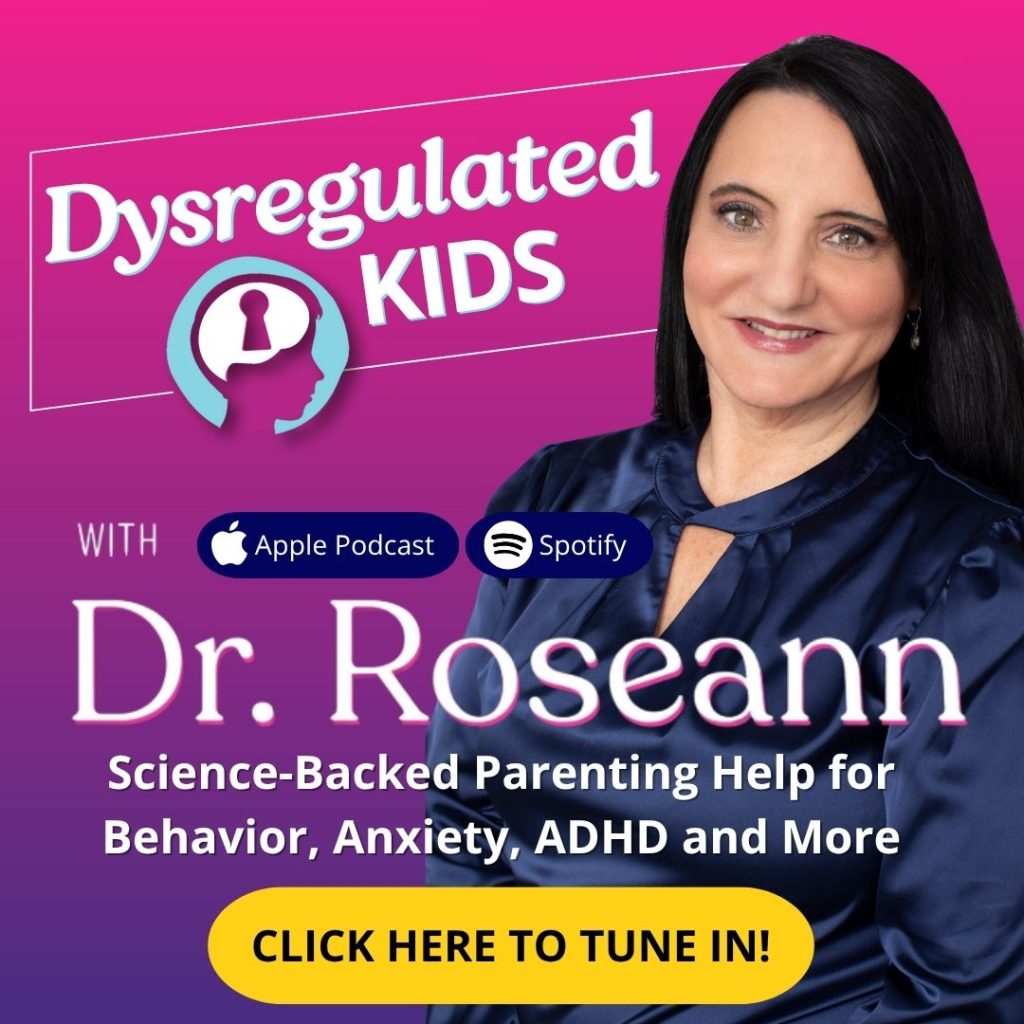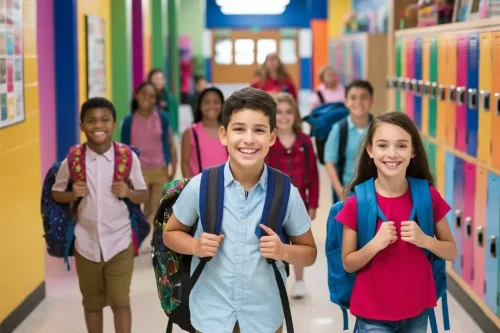Estimated reading time: 8 minutes
This guide shows you exactly how to discipline a teenager while keeping calm. Build trust and get better behavior—fast.
If your teen’s attitude or emotions feel out of control, you’re not failing—and you’re not alone. Teens push boundaries because their brains and bodies are undergoing significant changes.
My Regulation First Parenting™ approach helps you decode your teen’s behavior. It also helps you calm their nervous system.
When the brain is calm, real learning and cooperation can happen.
You’ll learn what actually works, what to avoid, and simple scripts you can use today. We’ll keep it short, science-backed, and doable for overwhelmed parents.
What Does “Disrespect” Really Mean in the Teen Years?
Disrespect is often dysregulation. A teen’s nervous system is either over-revved (fight/flight) or shut down (freeze).
Behavior is communication about that internal state. Calming the brain comes first; skills come next.
Why This Matters
- Co-regulation (your calm helps their calm) supports your teen’s ability to self-regulate (Ham & Tronick review; co-regulation operates at biological and behavioral levels).
- Harsh punishment increases negative outcomes; it doesn’t teach skills (Gershoff & Grogan-Kaylor, 2016).
Parent snapshot:
Marco, 15, blows up when asked about homework.
Try:
“Let’s pause. Breathe with me for 10 seconds.” Then: “What’s the one small step you can take before 7 pm?”
Takeaway:
Regulate → Connect → Correct. Calm first, then problem-solve.

How to Discipline a Teenager (Without Yelling or Power Struggles)
You can’t teach skills to a dysregulated brain. So we start with co-regulation, then clear limits, then collaborative correction. Regulate. Connect. Correct.™
Do this:
- Regulate: Lower your voice. Breathe slower than your teen. Offer water or movement.
- Connect: “I get it—you’re stressed. I’m on your team.”
- Correct: State the boundary and the next step: “Phone on the charger at 9. We’ll revisit after two on-time nights.”
“Kids do well if they can.” — Ross Greene, PhD
Evidence note:
The American Academy of Pediatrics advises avoiding physical punishment and verbal shaming and using positive, developmentally appropriate discipline (AAP Policy Statement, 2018).
What Consequences Actually Work for Teens?
Aim for natural and logical consequences tied to the behavior. Keep them short, predictable, and repair-focused—never humiliating.
- Natural: Forgot lunch → hungry at school → plan together for a fix.
- Logical: Broke curfew → earlier curfew for 48 hours + text-check plan.
- Positive reinforcement: Notice and reward what you want more of. It grows.
Why:
School-wide positive behavior supports (PBIS) and consistent reinforcement improve behavior and climate; recent trials show benefits across settings (Karlberg et al., 2024).
Parent snapshot:
Aisha, 13, sneaks extra screen time.
Try:
Screens off at 9 means 30 extra minutes on Saturday. Miss the cut-off? Saturday time rolls back.Takeaway:
Short, fair, and consistent beats big, harsh punishments (which backfire; Gershoff & Grogan-Kaylor, 2016).
Discipline Fit Guide:
|
Situation |
Regulate + Boundary |
Follow-Through / Repair |
|
Missed curfew |
3 slow breaths together → “Home by 9 tomorrow.” |
48-hr earlier curfew → Text plan + check-in |
|
Backtalk |
Silent count to 5 → “Try that again, respectfully.” |
Pause convo; retry earns closure → Appreciation after retry |
|
HW avoidance |
Water + 2-min walk → “Start 10 mins now.” |
Free time after the timer → Celebrate the first step |
|
Phone drama |
Phone to kitchen → “Charger at 9 nightly.” |
Extra time when on-time ×2 → Review plan Sunday |
How Do I Set Screen, Curfew, and School Boundaries That Stick?
Make it visual, specific, and rehearsed. Teens follow what they help build.
- Co-create a 3-rule family charter (screens/curfew/communication). Post it.
- Use “if–then” plans: “If homework isn’t started by 6, then I’ll sit with you for 10 minutes to get going.”
- Rehearse scripts when calm: “What will you say when friends push you to stay out?”
- Track wins, not failures (streak calendars work).

How Do I Handle Backtalk and Eye-Rolling in the Moment?
Keep it boring. Don’t take the bait.
- Micro-pause: Count to 5. Soften shoulders.
- Reflect: “You’re frustrated.”
- Retry: “Say that again with respect, then we’ll talk.”
- Exit ramps: “We’ll pick this up at 7 after a break.”
Parent snapshot:
Maila, 14, snaps, ‘You don’t get it!’
Try:
“You’re right—I might not. Tell me the one thing I’m missing.”
Takeaway:
Calm + curiosity defuse power struggles.
Parenting gets easier when you calm the brain first. Regulate. Connect. Correct.™”
What if My Teen Won’t Listen and Nothing Works?
First, check the state before the strategy. Are they hungry? Exhausted? Overloaded from school? If yes, regulate first. Then tweak the plan.
Troubleshoot
- Too big? Shrink the step (10 minutes of homework, then break).
- Too vague? Write it down. Put timers on it.
- No buy-in? Offer two acceptable choices.
- Try a reset ritual: 4-7-8 breathing, short walk, or music to downshift.
Co-regulation and nervous-system-aware supports help kids access self-control skills. (MDPI review on co-regulation).
When Is Teen Disrespect a Red Flag for Something Bigger?
If friction is constant or your teen is sinking in mood, sleep, motivation, grades, or friendships, look under the hood. ADHD, anxiety, OCD, mood issues, ASD, or PANS/PANDAS can all show up as “defiance.”
It’s not bad parenting—it’s a dysregulated brain.
What to Watch:
- Persistent irritability, shutdowns, or isolation
- School refusal or big sleep changes
- Risky behavior or withdrawal from activities they used to love
Next Steps:
- Start with your pediatrician and a mental-health evaluation
- Ask the school for data and support
- Consider brain-based tools (neurofeedback, QEEG), lifestyle pillars (sleep, diet, exercise), and therapies that support regulation.
Bringing It All Together: A Calm Path Forward
The truth about how to discipline a teenager is simple—calm the brain first, then teach.
Keep your limits clear, make consequences short and logical, and always repair after the storm.
Your calm presence changes everything. Regulate. Connect. Correct.™ Because when the brain is calm, behavior follows.
Download 147 Therapist-Endorsed Self-Regulation Strategies for Children: A Practical Guide for Parents. And bring more peace, cooperation, and calm into your home.
FAQs
How do I discipline without yelling?
Lower your voice, breathe, and use short, clear limits: “I’m happy to drive when you speak respectfully.” Calm first; boundary second.
What’s a good consequence for lying?
Repair the trust: extra check-ins + practice honest “redos.” Keep it time-limited and connected to the behavior.
Should I take the phone away?
Sometimes, briefly—and paired with a clear path to earn it back (on-time check-ins, respectful tone). Keep it predictable, not punitive.
What about grounding?
Short and specific works better than long and vague. Aim for 48–72 hours with a concrete “how to earn it back” plan.
How do I discipline a teenager who won’t listen?
Regulate first, then use if–then plans and choices. If nothing changes, screen for unmet needs (sleep, anxiety, ADHD). (AAP, 2018; Gershoff & Grogan-Kaylor, 2016).
Terminology
- Dysregulation: The brain and body are out of balance; emotions and behavior feel “too big” or “shut down.”
- Co-regulation: Your calm nervous system helps your teen’s nervous system settle.
- Natural consequence: What happens on its own (miss bus → late slip).
- Logical consequence: Adult-designed but related (late curfew → earlier curfew).
- PBIS: School-wide Positive Behavioral Interventions and Supports; a positive, skill-building approach used in schools.
Citations
Gershoff, E. T., & Grogan-Kaylor, A. (2016). Spanking and child outcomes: Old controversies and new meta-analyses. Journal of Family Psychology, 30(4), 453–469. https://doi.org/10.1037/fam0000191
American Academy of Pediatrics, Committee on Psychosocial Aspects of Child and Family Health, & Section on Developmental and Behavioral Pediatrics. (2018). Effective discipline to raise healthy children. Pediatrics, 142(6), e20183112. https://doi.org/10.1542/peds.2018-3112
Karlberg, M., Klang, N., & Svahn, J. (2024). Positive behavior support in school: A quasi-experimental mixed methods study and randomized controlled trial. BMC Psychology, 12, 521. https://doi.org/10.1186/s40359-024-02021-z
Always remember… “Calm Brain, Happy Family™”
Disclaimer: This article is not intended to give health advice, and it is recommended to consult with a physician before beginning any new wellness regimen. The effectiveness of diagnosis and treatment varies from patient to patient and condition to condition. Dr. Roseann Capanna-Hodge, LLC, does not guarantee specific results.
Are you looking for SOLUTIONS for your struggling child or teen?
Dr. Roseann and her team are all about science-backed solutions, so you are in the right place!
© Roseann Capanna-Hodge










